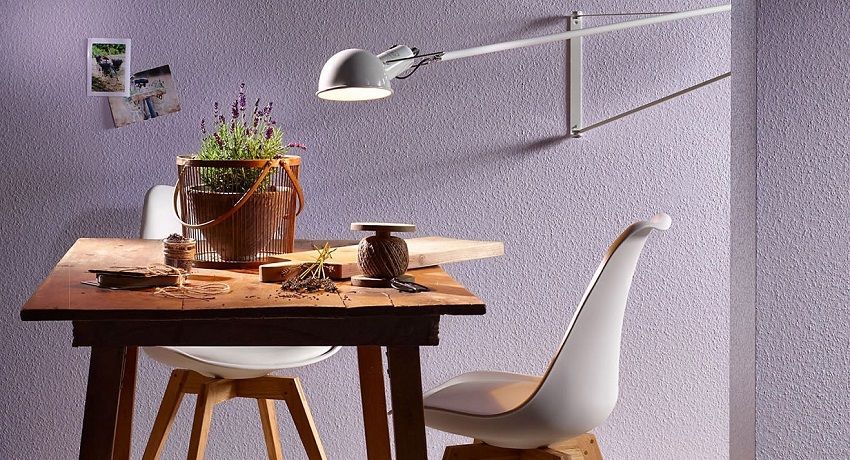When repairing a bathroom and a bathroom, it is often necessary to perform waterproofing works. Not only the durability of repaired elements depends on their quality, but also the risk of neighbors flooding in case of emergency damage to plumbing fittings. To waterproof the bathroom served for many years, you need to make it right, using materials intended only for this.
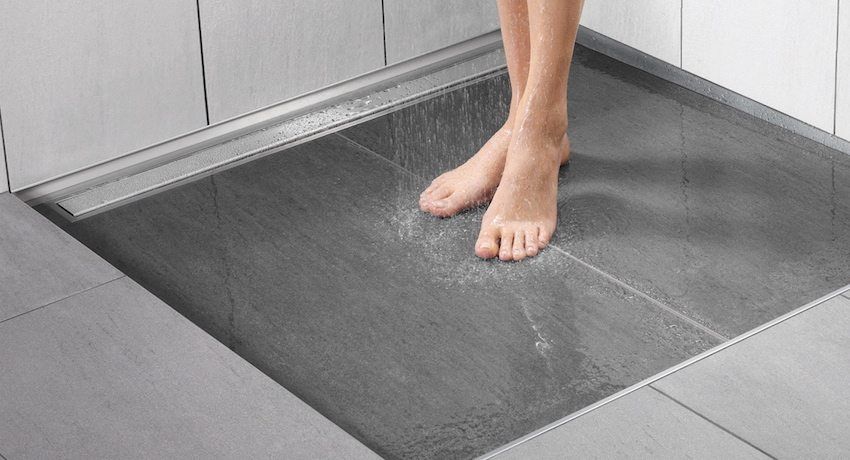
Types of waterproofing
In no case can not save on waterproofing. This is fraught with serious consequences. After all, all material and labor costs can be in vain, and the claims of flooded neighbors are not heavy.
Some pseudo-builders, in order to save money, lay a thick plastic film under the floor instead of special materials, mistakenly believing that its ability to keep out water will last indefinitely. This is not true. Polyethylene under the influence of an aggressive environment is very quickly destroyed, turning into separate fragments that are no longer able to retain moisture.
To avoid these troubles, it is necessary to use materials designed specifically for waterproofing works. These include:
- Bitumen based coating mastic.
- Mixes of cement with polymer additives.
- Water penetration protection.
- Rubber gidrobaryera.
- Various rolled materials with the bituminous basis.
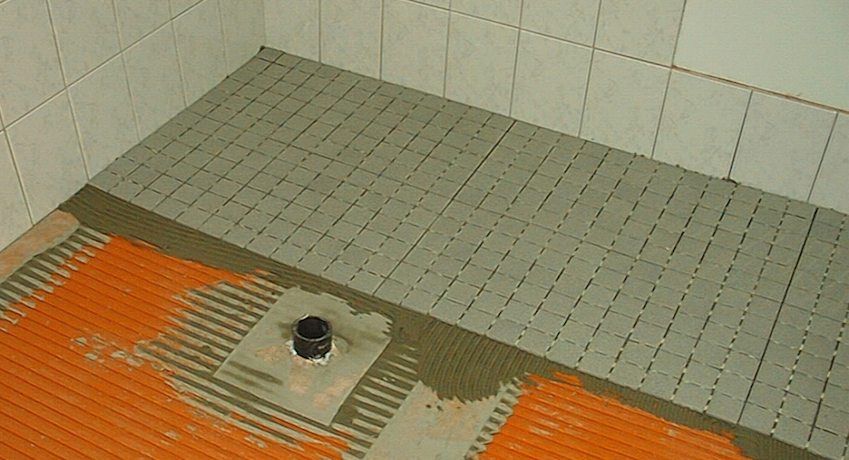
All of them have a different chemical composition and method of laying, on which the characteristics of the hydrobarrier and the technology of its device depend.
Helpful advice! You should not save on waterproofing materials. The best quality, made by well-known brands. They must be durable and environmentally friendly.
This material is a viscous bitumen based paste. It may contain various chemical additives, the composition of which depends on the manufacturer. Since bitumen is a low-melting substance, the plasticity of the paste increases with increasing temperature, which allows, using a burner or a building dryer, to fill all surface irregularities. This method is the most convenient. When it is easier to fill everything, even the smallest voids in the treated surface.
Material obmazochny type. The waterproofing effect is achieved due to the polymer particles contained in it, which form a moisture-proof monolith when dissolved in water. An aqueous solution of the desired consistency is prepared from the dry mixture and applied to the surface in several layers. In the technological holes next to the pipes of communication, you need to put more solution, in order to avoid leakage.
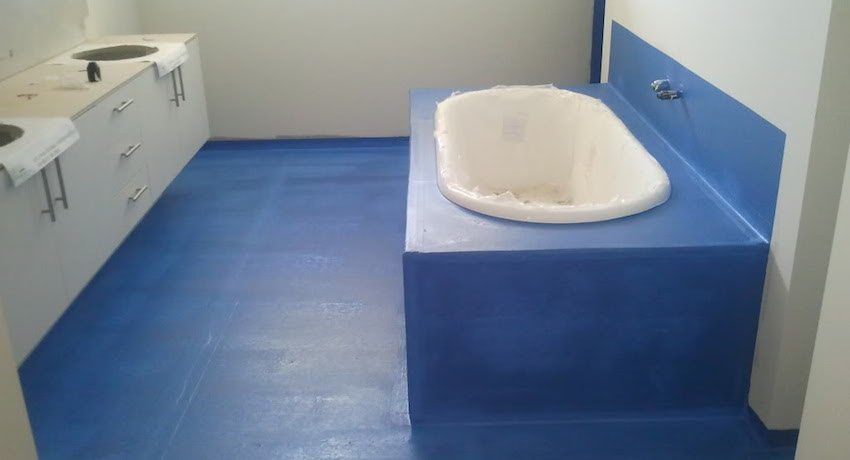
This type of waterproofing is often used as an additional to the main. These are polymeric substances that are added directly to the concrete, giving it waterproofing properties. When waterproofing the bathroom floor is done, materials of this type are added to the cement for the screed device. This technique additionally provides water resistance.
It is a rubber coating based on rubber or rubber. For its hardening, the reagents supplied are used. This type of waterproofing is very convenient to use if the floors in the bathroom are wooden. This type is very reliable, as the resulting coating is solid and waterproof. At the same time, it is very elastic, which makes it possible to use it even in the pool device.
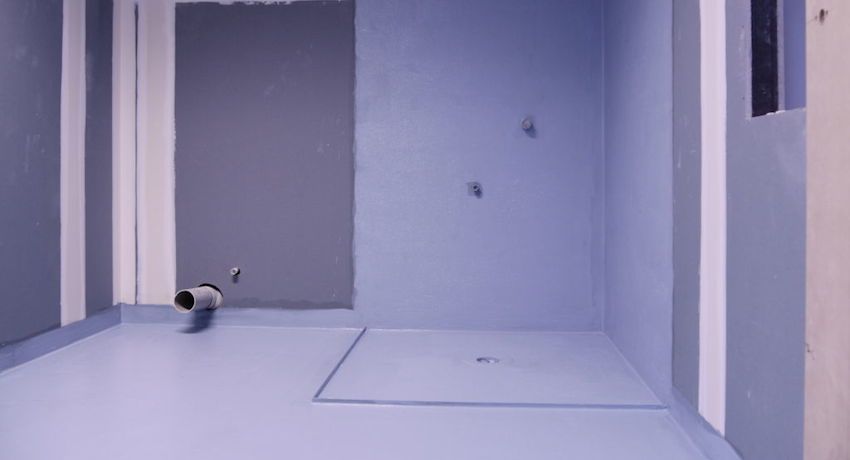
The most convenient in styling products. They are delivered in rolls and have the form of a film impregnated on one side with a bitumen composition. They are glued to the surface by heating to a plastic state with the help of a building hair dryer or a torch. There are films on a self-adhesive basis. There is no need to heat them.
Before directly starting such work as waterproofing a bathroom, it is necessary to dismantle all the old coating along with the existing remnants of the old waterproofing. Removed everything should be up to the floor slabs. It is advisable to vacuum the concrete in order to achieve the best adhesion with the waterproofing material.
At this stage, you need to make sure that with further construction the floor is 3-5 cm lower. This will allow you to avoid the flood in the apartment in the future, in the event of a water pipe break. The water will simply linger in the bathroom, as in a tray and will not cause damage in other rooms.

If the base of the floor are concrete slabs, then you need to putty them carefully. Particular attention should be paid to the joints, deep potholes and places of passage of water and sewage communications. Do not forget about the joints of walls and floor slabs. Putty is applied around the perimeter of the bathroom. Instead, you can use a cement mixture of the desired consistency.
Helpful advice! Whatever type of waterproofing is used, it is necessary to strictly follow the algorithm of its device.
Further, it all depends on the type of waterproofing material chosen. If it is coating, the solution is applied with a spatula or a brush over the entire surface of the floor and partially of the walls to a height of 10-15 cm. 2 or 3 layers are made depending on which waterproofing is selected. The result should be a surface like a shower tray. This is done so that water does not penetrate under the walls.
If rolled materials are used, they are heated by a burner or a building dryer and unwind over the entire floor. You do not need to forget about the walls. In order to achieve a better waterproofing effect on the bathroom floor, these two types of materials can be combined. In this case, gluing will be much safer. Especially carefully work needs to be done around communication pipes.
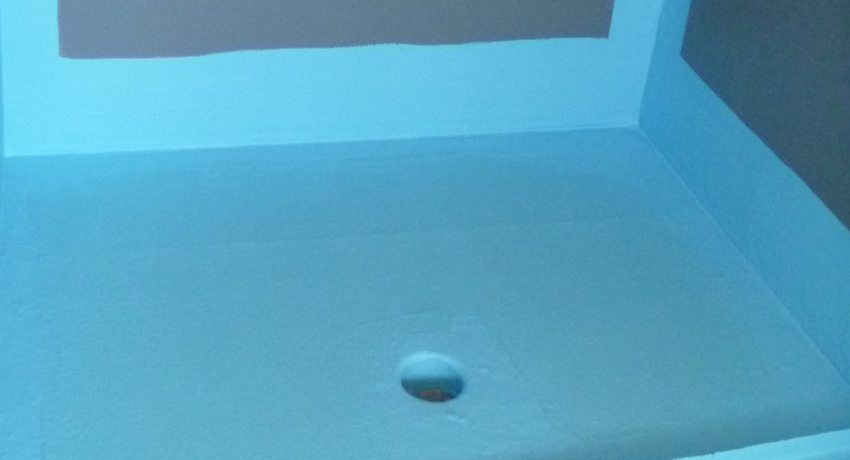
When using cement-based mixtures, similar work is being done. At the same time, it is advisable to add penetrating materials to the screed solution to increase the waterproofing effect.
Helpful advice! Need to pay close attention to the joints. This is the weakest point in any construction. It is necessary to coat them several times without sparing the material.
If the base of the floor is wooden, the waterproofing device requires additional efforts. The logs are fixed on the cleaned from dirty boards. Then put a vapor barrier film, which is laid insulation. For this purpose it is convenient to use expanded polystyrene with a smooth and durable surface. Then the joints between the plates and logs are coated with a sealant.
After this, liquid rubber mixed with the activator is taken and, as quickly as possible, it is applied with a roller onto the entire surface, including the lower part of the walls. If necessary, another coating layer can be applied.
Waterproofing the floor in the apartment before the screed: types and details of installation. Types of waterproofing materials used under the floor screed in the premises: roll, liquid, dry and penetrating the mixture.
When working with any of the above methods, you must strictly follow the instructions for the preparation and application of the solution developed by the manufacturer of the material. It is necessary to pay special attention to the drying times indicated in it. Otherwise, it can lead to the destruction of waterproofing ahead of time.
It must be borne in mind that all waterproofing materials have poor adhesion with tile adhesive. For this reason, cement screed is applied on top of all layers using reinforcement. Only it is permissible to glue tiles or apply other coatings.
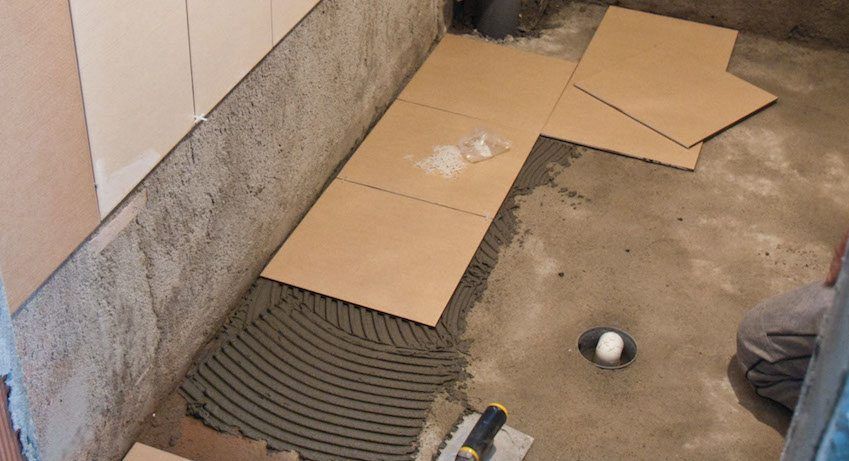
Materials are selected very carefully. Before buying them you need to thoroughly study the instructions. The purpose of this is to find out which floor covering it is most suitable for. There should be a perfect combination, since inconsistency can lead to difficulties applying it to the surface.
Having understood all the features of the production work on the waterproofing of the bathroom, you can independently perform this task without resorting to outside help. This will save the budget and give invaluable experience in such repairs.
